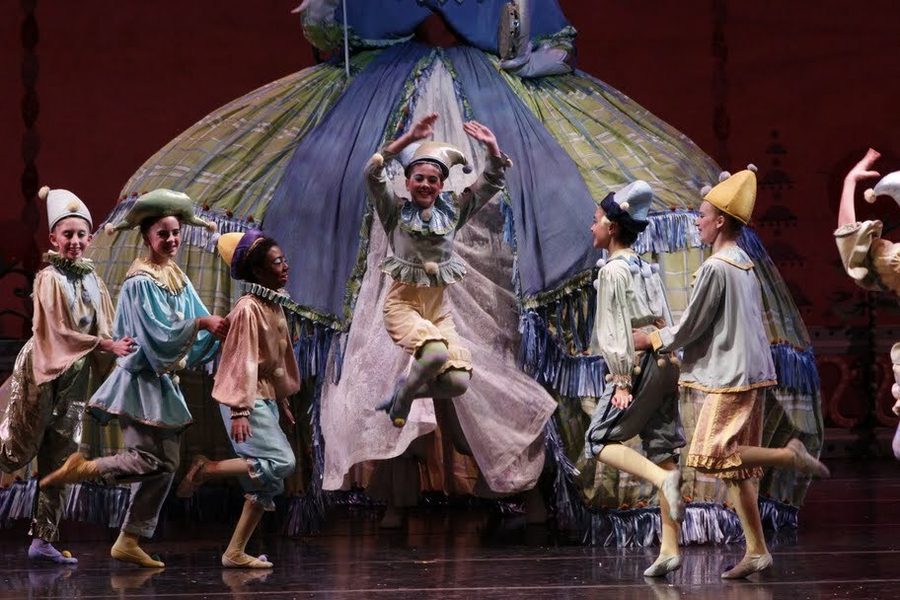
The life of a professional ballet dancer may look like a glamorous one. But in reality, dance is extremely grueling, high-pressure work, where dancers have little control of their schedules and the highly competitive nature of the business means few want to rock the boat or anger managers who decide the future of their artistic careers.
In a recent story for the Chicago News Cooperative, Meribah Knight details the travails of life for dancers in Chicago’s Joffrey Ballet, a relatively small critically acclaimed company that moved from New York in 1995.
Joffrey dancers were locked out by management who had threatened the fall season might be cancelled…until an agreement late July 14. The agreement maintains the dancers’ health care plans, which had been threatened with cuts, and pays them for extra rehearsal time demanded by directors. The American Guild of Musical Artists (AGMA) union is likely to vote to ratify the agreement this week.
Knight writes:
On one level, the current clash between the dancers and the ballet is simply another labor dispute between an employer and its employees — no different than Teamsters or plumbers squaring off with their bosses over the basics like pay, health care and pensions. But the dispute… also focuses a spotlight on the inner workings of an artistic craft. As dancers engage in hard bargaining with their bosses, they raise issues often obscured by the marvel the public sees on stage. Along with sore muscles and gnarled feet are long hours and relatively paltry paychecks brought by the choice to work in the arts, a field known for low pay for the rank-and-file.
Knight reports that the Joffrey dancers had almost gone on strike in summer 2008 before a high-profile free show at Chicago’s Millennium Park, until management offered them a deal at the last minute. Some reported déjà vu this time around. On July 1 this year dancers had been told to clean out their lockers and turn in their key cards, and seemed to be threatening the fall season would be canceled.
“It’s not yet clear whether a settlement will erase the rancor that has built up for at least three years,” Knight writes of the recent agreement.
At the Joffrey and other ballets, the pay is much lower than people might expect – on average barely over $30,000 a year for the Joffrey’s 42 dancers, while higher-ups make six figure salaries, Knight reports. Like many actors and artistic performers, dancers are employed in a somewhat precarious routine where they are constantly laid off and then rehired for different shows, usually collecting unemployment during the down-times. The Joffrey dancers are paid for 38 weeks a year.
The low pay could be considered especially disturbing given that, like an NFL player, dancers’ careers are by nature limited in length yet take an extreme toll on their bodies and such demands on their time that they are unlikely to simultaneously pursue education or experience that will prepare them for any other future line of work.
The Joffrey dancers have been pushing for family health care coverage, a demand that was not met in the recent agreement. Family coverage and maternity leave have become more prominent issues in the dance world as more dancers are having families, in part because they are staying in the profession longer, according to Knight. The Joffrey dancers get 21 paid sick days per year.
In 2005, a labor dispute interrupted the Nutcracker at the Washington City Ballet, the main money-maker for the company, which had been staged uninterrupted for 40 years. In parallels to the Joffrey situation, ballet management said dancers were on strike while dancers said they had been locked out.
The Washington Post reported on the dispute as dancers picketed outside a scheduled Nutcracker performance canceled by management:
The picket line, perhaps on an icy sidewalk, brings to a head a long-simmering series of conflicts between the dancers and management. The issues are complex, but are less about money than about workplace safety and job security (or, from the management’s viewpoint, the ability to hire and discharge dancers according to its own judgment).
The Post quoted an AGMA rep on the rigors of the job, especially during Nutcracker season.
She said several dancers are injured, including leading ballerina Michelle Jimenez, who has a stress fracture. Another dancer has had to have a screw implanted in a foot, and one plummeted several feet, landing on his back, after being dropped in a rushed exit. The rest are exhausted, she said, from a chaotic and overtaxing rehearsal schedule.
Kari Lydersen is a Chicago-based journalist, author and assistant professor at Northwestern University, where she leads the investigative specialization at the Medill School of Journalism, Media, Integrated Marketing Communications. Her books include Mayor 1%: Rahm Emanuel and the Rise of Chicago’s 99%.








